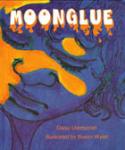AustLit
Latest Issues
AbstractHistoryArchive Description
Notes
-
Moonglue was written from the memory of stories told to the author in childhood. Includes a play text.
Publication Details of Only Known VersionEarliest 2 Known Versions of
Works about this Work
-
A Sticky Story for Kids
1994
single work
review
— Appears in: Koori Mail , 18 May no. 76 1994; (p. 17)
— Review of Moonglue 1993 single work picture book 'The children watch the moon instead of going to sleep, and find themselves in a sticky situation - Moonglue - which even the Maban man can't fix. Moonglue is a delightful tale from Kimberley storyteller, Daisy Utemorrah, with dramatic illustrations by Susan Wyatt.' -
Untitled
1994
single work
review
— Appears in: Reading Time : The Journal of the Children's Book Council of Australia , May vol. 38 no. 2 1994; (p. 21)
— Review of Moonglue 1993 single work picture book -
Book Reviews
1994
single work
essay
— Appears in: Australian Aboriginal Studies , no. 1 1994; (p. 81-82)'These four beautiful books, in the veritable tradition of well-loved stories, surely will continue to be retold. The stories themselves stem from a range of sources. Bangu the Flying Fox, as Jillian Taylor and the book's colophon inform us, is a Dreamtime story courtesy of the Umbarra Cultural Tour Group and Mervyn Penrith who '...told his grandfather's story and gave permission for us to share it with you'. It tells the story of Bangu, who cannot decide whether she is an animal or a bird, and who 'changes sides' depending on which group is 'winning in the fight'. Bangu's appearance, exclusively at night, is thus explained, and a suitably moral ending ensues. Without the use of metaphor, or allowing this message by association, young readers/listeners are directed: 'If you find friends, stick with them. Help them when things are good and when things are bad'. Bangu the Flying Fox is apparently aimed at both Aboriginal and non-Aboriginal audiences; the book will be useful in primary schools, incorporating a Koori narrative into learning. A teacher living near Wallaga Lake, Jillian Taylor will have noted the benefits of inclusion and this, presumably, was an aim of the retelling.' (Introduction)
-
Untitled
1994
single work
review
— Appears in: Reading Time : The Journal of the Children's Book Council of Australia , May vol. 38 no. 2 1994; (p. 21)
— Review of Moonglue 1993 single work picture book -
A Sticky Story for Kids
1994
single work
review
— Appears in: Koori Mail , 18 May no. 76 1994; (p. 17)
— Review of Moonglue 1993 single work picture book 'The children watch the moon instead of going to sleep, and find themselves in a sticky situation - Moonglue - which even the Maban man can't fix. Moonglue is a delightful tale from Kimberley storyteller, Daisy Utemorrah, with dramatic illustrations by Susan Wyatt.' -
Book Reviews
1994
single work
essay
— Appears in: Australian Aboriginal Studies , no. 1 1994; (p. 81-82)'These four beautiful books, in the veritable tradition of well-loved stories, surely will continue to be retold. The stories themselves stem from a range of sources. Bangu the Flying Fox, as Jillian Taylor and the book's colophon inform us, is a Dreamtime story courtesy of the Umbarra Cultural Tour Group and Mervyn Penrith who '...told his grandfather's story and gave permission for us to share it with you'. It tells the story of Bangu, who cannot decide whether she is an animal or a bird, and who 'changes sides' depending on which group is 'winning in the fight'. Bangu's appearance, exclusively at night, is thus explained, and a suitably moral ending ensues. Without the use of metaphor, or allowing this message by association, young readers/listeners are directed: 'If you find friends, stick with them. Help them when things are good and when things are bad'. Bangu the Flying Fox is apparently aimed at both Aboriginal and non-Aboriginal audiences; the book will be useful in primary schools, incorporating a Koori narrative into learning. A teacher living near Wallaga Lake, Jillian Taylor will have noted the benefits of inclusion and this, presumably, was an aim of the retelling.' (Introduction)




